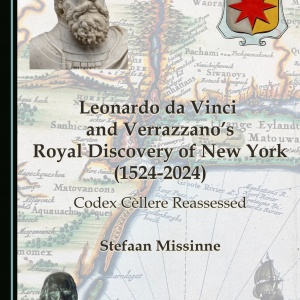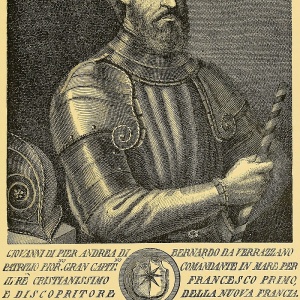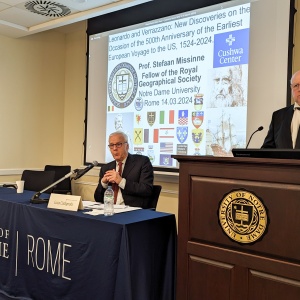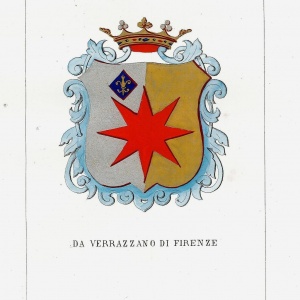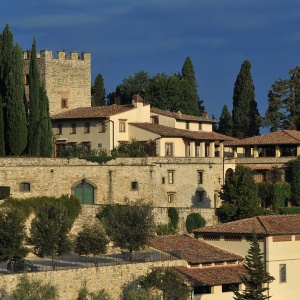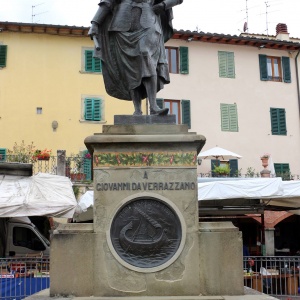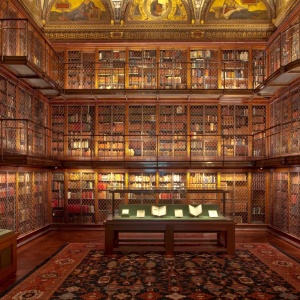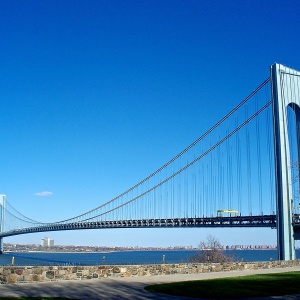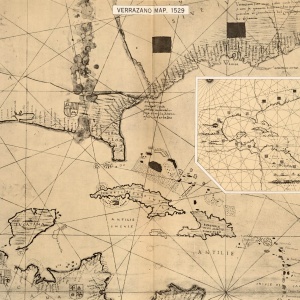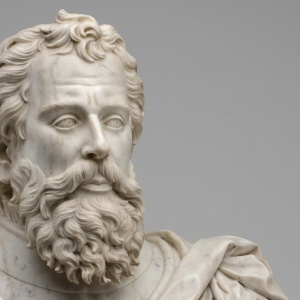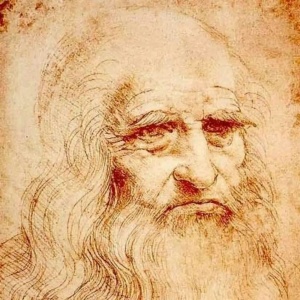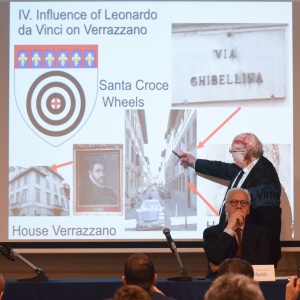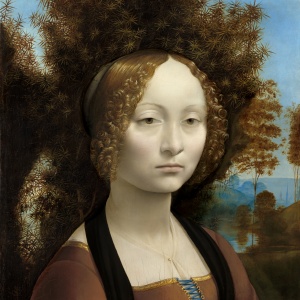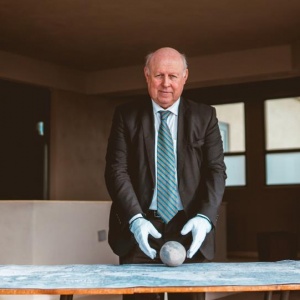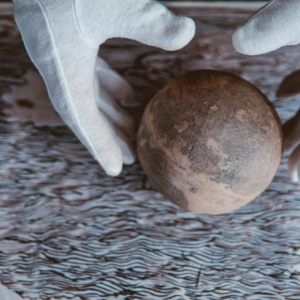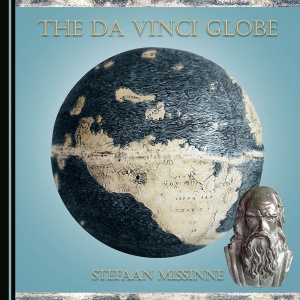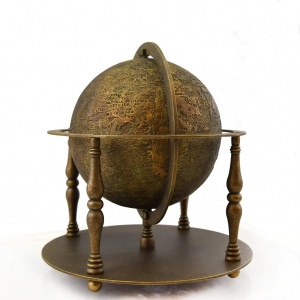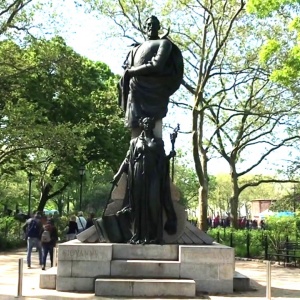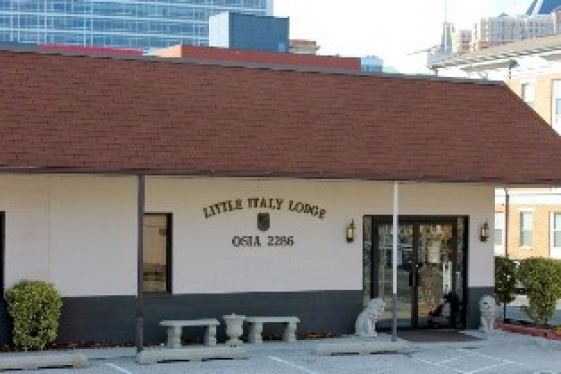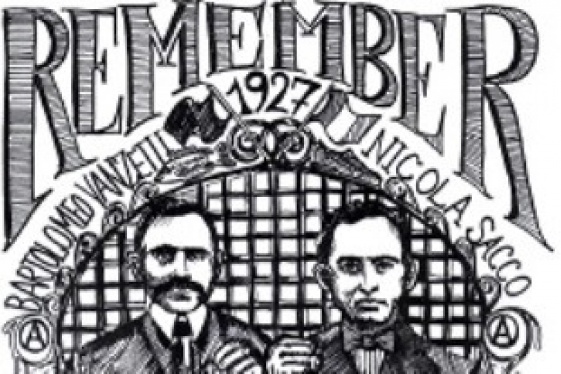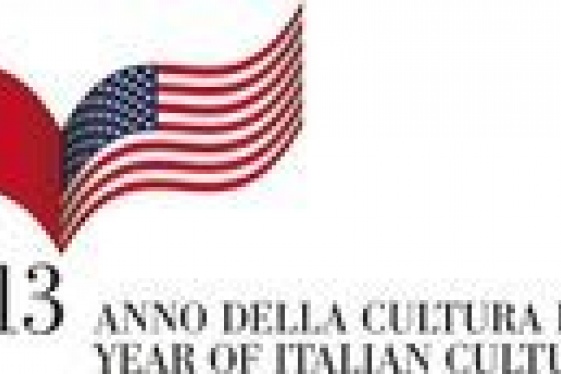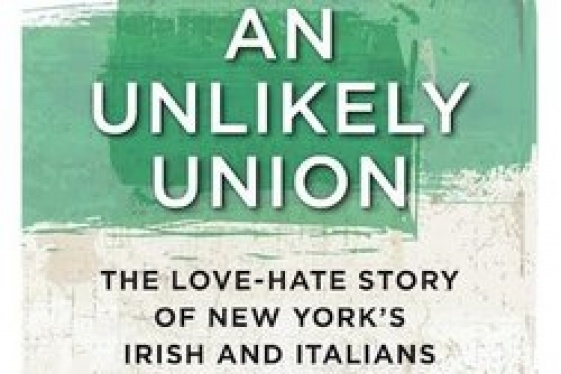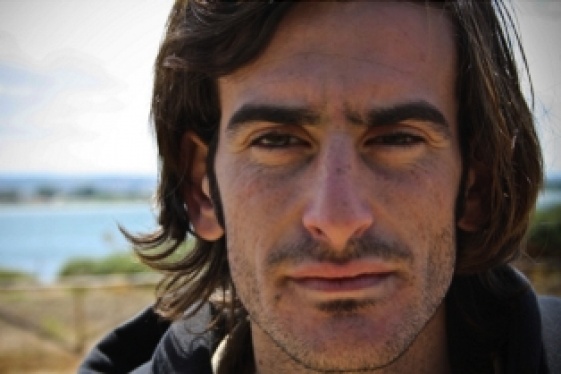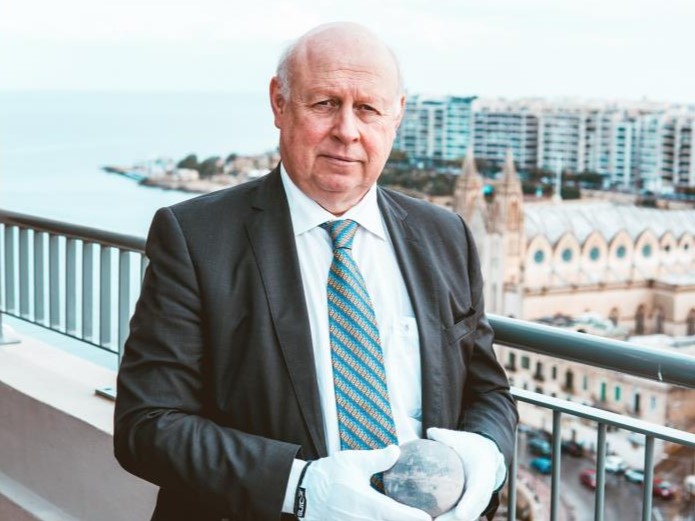
Stefaan Missinne (Author of the book "Leonardo da Vinci and Verrazzano's Royal Discovery of New York")
500 anni dopo: Leonardo da Vinci e la reale scoperta di New York di Verrazzano

April 17, 2024, marks the 500th anniversary of the first entry of someone from the Old World into New York Bay. It was, of course, an explorer from the lands now called Italy: Giovanni da Verrazzano. We the Italians could not miss this very important date with history.
We talk about it with admiration, pride and gratitude, hosting a great researcher, an enormously successful historian, who discovered incredible things, collected in a newly published book, "Leonardo da Vinci and Verrazzano's Royal Discovery of New York." We welcome Prof. Stefaan Missinne, thanking him very much indeed for his kind helpfulness.
Professor, the first question is about the hero of the year, Giovanni da Verrazzano. Can you briefly tell us who he was?
I thank you for this interview.
Giovanni da Verrazzano (c. 1485-1528) describes himself in an elegant style to the Christian King Francis I of France. He writes he is the King´s humble servant as well as an inventor, thereby meaning discoverer. This is rather surprising.
Verrazzano is indeed a very important Italian navigator. During his epic journey 500 years ago, he mistook the inland waters of Pamlico Sound for an open strait leading to the Far East, but that does not diminish his importance in the history of discoveries. Interestingly, apparently no one has noticed that this Tuscan's family crest is the Marian eight-pointed star. I noticed it during a visit in the castle of Verrazzano because it hangs there on the exterior wall. On a modern version it is combined with the French lily because he was in the royal service of the King of France.
It is this Italian explorer who is commemorated this year for being the first in Early Modern history to discover life in the New World on the American east coast.
He came from a village in the Chianti wine region in Tuscany known as Greve in Chianti. It has apparently been forgotten that he was the first to describe the coastal areas of the North American East Coast, including New York.
His original travelogue that has survived uniquely illustrates the earliest detailed contact with native North Americans during his more than ten landings on the American east coast. The natives Verrazzano appears to have encountered from south to north included the Waccamaw and Pee Dee, the Cape Fear, Algonquians, Lenni Lenape and the Narrangansett. This short list is indicative only.
Verrazzano's voyage of 1524 made first-time history that there was a connection between the English and Portuguese discoveries in the north (Newfoundland) and those of the Spanish in the Caribbean.
Some additional character traits of Verrazzano were that he was an open-minded humanist. Giovanni da Verrazzano can certainly be seen in the same ranks as other Italian compatriots known as explorers such as Columbus, Vespucci and Caboto.
A great advantage for my research was that the Pierpont Morgan Library preserved Verrazzano's historical literary birth certificate of New York. This historical document is now five hundred years old, as it is dated 1524.
The five hundredth anniversary of the discovery of the American East Coast is an opportunity to give this famous Italian the historical attention he deserves.
The naming of the suspension bridge over the Narrows in New York after Verrazzano, which opened in January 1964, has made the Verrazzano name known to a wider American and international audience.
Five hundred years ago Verrazzano was the first European to enter New York Bay. But his journey and his enterprise was much more than that. I was struck by the huge number of references you discovered in different places on the east coast of the United States. Your book contains them all, but I ask you to give some previews to our readers.
I appreciate you were struck by the numerous new references and findings that I discovered in the travel report of Verrazzano. To better understand, it is important to know that because of the late discovery of the Cèllere Codex, Verrazzano´s travel report has been misinterpreted historically and in the history of cartography specifically.
In the 19th century, Verrazzano was believed to be the result of a fictitious fabrication and a mistaken identity. Therefore, his chronicled report, his exploration, and discovery of unknown lands on the US East Coast has been forgotten in history for many years.
My new book published by Cambridge Scholars Publishing on March 14th 2024 is based on a laborious revision of data and a meticulous research. Initially I only wanted to write an article. But the more I read about Verrazzano, the more I noticed that most authors used existing sources from others without really generating new findings. And having written about Leonardo, I wondered if these two extraordinary Tuscans living in exile in France had known each another.
I was astonished to discover so many new underlying aspects in his travel report. This new volume with many pictures is expected redraw some of the contours of Renaissance scholarship regarding this valuable Italian humanistic explorer and his environment. He sailed along the coastline of the following US States: South Carolina, North Carolina, Virginia, Maryland, Delaware, New Jersey, New York, Connecticut, Rhode Island, Massachusetts, New Hampshire and Maine. He passed by Nova Scotia and Newfoundland in Canada before returning to France.
For the naming of different geographical areas (cape, island, land, port, shoals), Verrazzano uses the family names of political heavyweights of several of the different French noble houses including the Valois, Orléans, Bourbon, Savoy, and Lorraine, among others. Just to give a few examples of the who is who of the French nobility in the place names by Verrazzano: The Valois-Angoulême (Santa Margarita for the Bay of New York), the Valois-Alençon (Cape Lanzone for Cape May in New Jersey, on the Isthmus of Delaware Bay), the Lorraine (Coast of Lorrenna for the cardinal, son of René II, Duke of Lorraine, for the Delaware coastline), the Gouffier (Cape Bonivetto, for the area around Atlantic City in New Jersey), the Bourbon-Vendôme (Vandoma River, for the Delaware River), the Bourbon-Condé (Little St. Pol Mountain, for the Atlantic Highlands), the Valois-Angoulême (Angoulême – for New York), the Savoy (Island of Louise, for Martha´s Vineyard in Massachusetts) and the d’Albret (Three Daughters of Navarra living at the French court in exile, for Deer Island, Vinal Haven and Island Au Haut on the Coast of Maine).
This is a first in American history and a tentative filling of a gap in the American-French-Italian scholarship. It is not known that any other discoverer was so “classical”, yet even political. Verrazzano gave balanced attention to members and even fractions of a royal court, in this case the French royal court.
In addition, some of his so-called ethnological placenames are puns with a pictorial content chosen by Verrazzano to define a specific person.
The Tuscan sailor linked the plight of exiles to islands, which have an ambivalent character as a place of solitude and isolation, but also of safety and refuge. These puns are a first in the literature on Giovanni da Verrazzano. Scholars in the history of American cartography may recall René II, Duke of Lorraine who sponsored the humanist circle in St. Dié and who played a key role to create the 1507/1515 large world map of Martin Waldseemüller now at the Library of Congress.
A new finding is the iconographic meaning of the toponym Armelline sandbank. It refers to the whiteness of the sea foam around it. Verrazzano chooses the word of a well-known animal, namely the ermine, thus connecting the whitecaps of the surface of the sea to the unmistakable coat of arms of Queen Claude of France. She is the reigning Duchess of Brittany from the powerful House of Valois-Orléans.
Verrazzano finds captivating suitable ways to include the surnames of his sponsors, like Gondi, in his toponyms without offending his royal patron. Moreover, the longer he sailed onward north along the US East Coast, the more the “Italian influence” of his homeland and the neighboring Mediterranean (Rhodes, Sicily, Dalmatia, Illyria, etc.) became a suitable part of the comparative and vivid description of the new places he finds and names.
Your book is called "Leonardo da Vinci and Verrazzano's Royal Discovery of New York." What relationship linked these two Tuscan greats?
In my research I found that Leonardo and Verrazzano were acquainted with the same members of very powerful French families. They both worked for the same royal patron, King Francis I of France, and both had contacts with other members of the royal family, including the king’s very dominant mother, Louise of Savoy.
In addition, Leonardo and Verrazzano were part of a big network and they even shared the very same Italian acquaintances, including many Tuscans and other Italians living in exile in France. These included members of the Medici, Gondi, Ridolfi, Rucellai, Rustici, Pallavicino, Benci and Giovio families.
A big surprise was that I found, with the help of Prof. Laura Cassi from Florence that the Vinci and Verrazzano families were neighbors who lived on busy Via Ghibellina Street in Florence. They shared the Florentine banner of the Santa Croce and even the banner of the subdivision of their locality, the one of the quarter wheel. This heraldic banner represented their immediate Florentine neighborhood.
What relationship further linked these two Tuscan luminaries?
As the research progressed, I came across more and more connections between the two. To name just a few: Verrazzano mentions the name of the French ambassador who accompanied Leonardo to France for Race Point in Massachusetts. Moreover, Verrazzano chooses the name of the wife of the cousin, Leonardo’s father´s banker (A. Gondi), for a strategically important island rock, now known as Rose Island, at the entry in Newport Harbor.
In any case, it is an impressive fact that the leading financial world capital of the world, New York was discovered by means of the key crowd financing provided by the nephew of Leonardo da Vinci´s father´s banker. Verrazzano chooses the name of the cartographer Paolo Giovio, who will later become Leonardo's first biographer and even his own, for Point Judith in the US State of Rhode Island. Verrazzano's travelogue even ends up in the library of the aforementioned Paolo Giovio.
The name of a cape near Atlantic City in New Jersey Verrazzano reserves for Leonardo's friend, the French admiral Bonnivet.
On top of that, Verrazzano names the New York marina after Margarita, the king's sister who was patron of Leonardo's works. It would, of course, have been even more obvious if Verrazzano would have named a rock or inlet on the US East Coast after Leonardo.
Nevertheless, there are numerous so-called pieces of circumstantial evidence, but one of course asks if these can be seen as an irrefutable proof that Leonardo influenced his younger compatriot?
The answer is yes. This evidence lies in the extremely small deviation of only 0.4% between the one-time value of the size of the world written down by Verrazzano in his travelogue and the unpublished value given by Leonardo 20 years before. This is irrefutable mathematical evidence that Giovanni da Verrazzano was influenced prior to his departure by his famous Tuscan fellow companion Leonardo da Vinci. Most likely, this happened via the close family ties between the Benci and the Gondi families.
Italian family ties and international networks in Renaissance have been known to be very important. I discovered at the end of writing this book that a certain Costanza Benci married Bernardo Gondi in Florence in June of 1517.
Originally, in the 14th century, the Benci/Benchi were called Usacchi (or Isacchi) and were possibly of Jewish origin. Later, the Usacchi family changed its surname to that of de' Benci. The origin of the word bank stems from the Italian word “banco” which means bench. The cultured Benci family was a Florentine patron of Leonardo da Vinci and an important banking family.
But could this Costanza Benci be related to Giovanni Benci and her even more famous sister Ginevra Benci? Initially this trace had a dead end. But I found that Costanza Benci had several children. Two of Costanza´s children were baptized in the name of Amerigo Gondi, born in 1530 and Ginevra Gondi born in 1531.
But was this a possible sign Costanza Benci of a relationship related to the famous Ginevra Benci painted by Leonardo da Vinci? In Italy, and in many other places of the world, is not uncommon for children to be named after their ancestors. With the personal help of the Marchioness of the famous Gondi family in Florence, it was possible to clear up this mystery.
The surprising answer was that Costanza Benci was the daughter of Bartolomeo Benci, who in turn was the brother of Amerigo Benci. And Amerigo Benci was the father of Ginevra Benci whose portrait was painted by Leonardo da Vinci. Costanza and Ginevra and her brother Giovanni were thus full cousins. In other words, a direct family relationship existed between the banker Amerigo Benci, his children including Giovanni Benci (and his famous portrayed sister Ginevra) and the children of Bartolomeo Benci and his daughter Costanza who married Bernardo Gondi in 1517. The above family connection takes on a special hue as Leonardo da Vinci deposited his world globe depicting an open sea route to China, chosen by Verrazzano, with his friend Giovanni Benci in Florence. This is a new fragment in an incredible historical setting, and it provides the scientific basis for a credible conjunction.
In 2012 you discovered the Da Vinci Globe, and this has a fundamental importance for the topic of your book and of this interview. Please tell us more, I personally find your discovery exciting!
The discovery of da Vinci's iconic 1504 globe in London during the Royal Geographical Society's in London in 2012 was indeed a serendipity.
The scientific research that provided irrefutable evidence of Leonardo´s authorship took six years. It showed that Leonardo not only knew that the new world had been discovered. He was even the first to make a globe of it. To do so, this genius Italian Renaissance artist used two lower shells from two ostrich eggs.
These eggs originated from ostriches from the garden of Pavia castle. His globe is the oldest globe in history on which the names of many countries, including Brazil, Judea, China, Germany, etc. are engraved. This story was published in 2018 in my book “The da Vinci Globe”, by Cambridge Scholars Publishing, highly recommended for any reader who wants to follow an exciting investigation.
In 2018, not yet planning to write about the quincentennial of Verrazzano, I wrote about the brother of Verrazzano whose map is kept at the Vatican Museum. I had inspected this map. I had noticed its erroneous and mythical Verrazzanian Sea, linking a narrow isthmus on the Atlantic Ocean with the Pacific. On the da Vinci Globe an open sea passage to the eastern coast of Asia is portrayed.
In the Codex Atlanticus, page 331 recto, dating from 1504, Leonardo writes “El mio mappamondo che ha Giovanni Benci” which in English means: My world globe that has Giovanni Benci. Leonardo's earth diameter of 7.000 miles is reflected in the scale of the da Vinci Globe at 1/80.000.000. The Italian nautical mile he uses is 1.280 meter per mile. Leonardo´s definition allows to compare with what Verrazzano wrote down in miles with regarding to the circumference of the world on the 34th parallel north.
As luck would have it, there is a physical and historical connection between the place of storage where the 1524 document with the literary discovery of New York, the earliest cartographic birth certificate with the first-ever naming of America dating from c. 1507 and with the twin of the da Vinci Globe dating from 1504.
What is rather unique in the world is that the New York Public Library's Rare Book Department, which houses the Lenox Globe dating from 1504, a copper cast globe, without any green or black patina, replica of the da Vinci Globe, also has the epic cartographic birth certificate of the USA dating from c. 1507.
In contrast, the Pierpont Morgan Library houses Verrazzano's historic literary birth certificate of New York dating from 1524 with information on the size of the world based on the da Vinci Globe.
Both libraries are in Manhattan. They are located only five blocks and a street corner away from each other, namely Madison Avenue/E 41 Street, and nobody seems to have noticed these valuable historic Americana treasures (yet).
Now that your book is published, what are the conclusions you have come to regarding this historic event that saw 500 years ago the lands that would later become Italy and the United States as protagonists?
My new book is available via www.cambridgescholars.com and it unveils for the first time in history the background and deeper meaning of Verrazzano´s choice of placenames. These have in the past have not been correctly understood. His travelogue is much more than report. It is a personal testimony of an Italian that discovered large parts of the coastline of the East of the United States. The names of the geographical locations, as given by Verrazzano, can be linked to his experience as a navigator, his social context and setting in life.
It was believed that Verrazzano, a pioneer of globalization, named locations after trees and plants, imprecisely identified as due to a botanical interest. However, I offer the evidence that their symbolic meaning including the religious connotation, which fits within the Renaissance iconography, ought to have been considered. It may be assumed that Verrazzano was in France several years prior to 1521. Most likely Verrazzano looked for a new employer in France in 1518 with the updated cartographic knowledge he had gathered in Lisbon and Seville.
What gives an idea of the cartographic information that Verrazzano might have learned during his sojourn in Lisbon and Seville in 1517 can be seen on a small world map based on a design by Leonardo da Vinci. It is noteworthy to mention an inconspicuous sheet of globe gores found among the papers in the handwriting of Leonardo.
The reason why these, dating from c. 1515, are relevant is that they are the only contemporary ones to depict Florida as an island, which was discovered in 1513, and the open western seaway on the 34th parallel north between Florida and Bacalar (Newfoundland). Verrazzano selected this supposed open sea route for his daring enterprise in 1524, trying to reach Cathay (China).
To his royal employer, Verrazzano appeared to be a diplomatic, courteous, and erudite humanist. He knowledge of the Holy Scripture is remarkable. This Tuscan “astronaut” of the early sixteenth century recalls personalities like Pierrevive and Giovio, not because of their religious or military importance but because of their intellect and cultural influence in society.
The ancients play a role in Verrazzano’s discourse. Although Verrazzano corrects Aristotle and Ptolemy and refers to other ancients including Virgil’s Archadia, the calculation of the Italian of the world’s dimension is typical for the Renaissance.
With this study, Verrazzano can now, among many things, be remembered as the discoverer of New York. His was the first Early Modern exploration of the US East Coast. Verrazzano is an inspiration for many Italians in the New World up to this day. A sign that Verrazzano is treasured in the USA is that everyone knows the large bridge in New York that carries his name.
You are a collector of old maps and globes; and a member of several world recognized Institutions, among which the Washington Map Society, the Leonardo da Vinci Society, the International Society for the History of the Map. No one among the people I know has more knowledge to answer this last question, which applies to any event that happened or person who lived 500 years ago (any reference to Christopher Columbus is by no means coincidental). Does it make any sense, is it correct, is it honest, to claim and compel others to judge the world of five centuries ago with the mindset, principles, and attitudes of today?
I thank you for your kind compliment. I think it is a natural development, largely influenced by the media. People interpret history through the glasses they use to watch TV and films every day, and maybe even when reading newspapers. It is important to learn history to know the future. I think there is a saying that history repeats itself. There is a lot of important geographical knowledge in old maps and globes. These reflect the historical interpretation of the time of and before the making of these maps. Not all of them are always very up to date, but they do provide a picture of national influences and historical borders. It helps to better understand the contemporary situation in many countries of the world. How history and its education are handled in the community is an indicator of how history is valued. It makes no sense to try to reinterpret history with today's values. This tentative reinterpretation may foreshadow how society will evolve.
In Verrazzano´s Italian travelogue, Codex Cèllere, a key document in the history of America, Verrazzano describes what the King of France asked him to do: To find the seaway to China. The Tuscan’s achievement was—as a victorious navigator who graciously made it with his crew and crossed the unknown oceanic waters in a single ship—a first in history.
Less than a century later, in 1607, Chesapeake Bay would be the point of entry for the English immigrants and their successful settlements on the borders of the James River at Jamestown, Virginia. I suspect many people have never heard of Verrazzano nor of his travelogue and its vivid descriptions. The book I wrote serves to make his American history and him better known. It is more than just a repetition of the descriptions. It offers a unique perspective for the reader to better understand Verrazzano´s historical setting and his background. Therefore, it makes more sense to learn to historically assess the world of five centuries ago and, as a result, to understand the thinking, the principles, and the attitudes of the time past to better comprehend the present.
Coincidentally, Ettore Ximenes' (1855-1926) magisterial 1909 bronze monument of Giovanni da Verrazzano in Battery Park in New York stands on a 1952 pedestal. It is made of granite taken from Deer Island, one of the three islands named after the Navarrese princesses to which the Tuscan referred in his travelogue.
In other words, the Italian explorer is now standing on a stone related to the three islands of princesses of Navarra named by Giovanni da Verrazzano. One of these islands is now called Deer Island on the coast of Maine. I think this happened rather by accident. Whether this is important one might ask. I would say no. But perhaps the American schoolchildren who later visit Battery Park in New York will learn that Verrazzano's 500-year-old history is intimately connected to that of America's present without unnecessarily being reinterpreted with 21st century values. The century-old stone from Deer Island is proof of it.
Making an exception, I end this interview with a personal remark attributable only to me, Umberto Mucci, and not to Professor Missinne. In 1528, during his third expedition, Verrazzano was captured and devoured (yes, devoured) by a tribe of cannibals. With the utmost respect and total sympathy to Native Americans for all the harm that has been done to them (not by Columbus), the next time you hear someone describe Christopher Columbus as the villain of the story who arrives in a supposedly peaceful and wonderful earthly paradise, and brings evil among natives who are thoughtful, happy and kind to one another, remind them of the end that befell this other outstanding explorer, in what was anything but an earthly paradise of peace and prosperity.
You may be interested
-
2015 scholarship competition
The La Famiglia Scholarship committee is pleased to announce the financial aid competition...
-
9th Annual Sacco and Vanzetti March/Rally
Saturday, August 23rd, in Boston, the 87th anniversary of the execution of Nicola Sacco an...
-
A Week in Emilia Romagna: An Italian Atmosp...
The Wine Consortium of Romagna, together with Consulate General of Italy in Boston, the Ho...
-
A wreath for Columbus and three crowns for t...
The Columbus Day Committee of Atlantic City along with the Bonnie Blue Foundation annually...
-
An Unlikely Union: The love-hate story of Ne...
Award-winning author and Brooklynite Paul Moses is back with a historic yet dazzling sto...
-
Cathedral of St. John the Divine, Oratorio S...
For the first time ever, The Cathedral of St. John the Divine, in collaboration with the O...
-
Davide Gambino è il miglior "Young Italian F...
Si intitola Pietra Pesante, ed è il miglior giovane documentario italiano, a detta della N...
-
Emanuele: cervello d'Italia al Mit di Boston
Si chiama Emanuele Ceccarelli lo studente del liceo Galvani di Bologna unico italiano amme...





